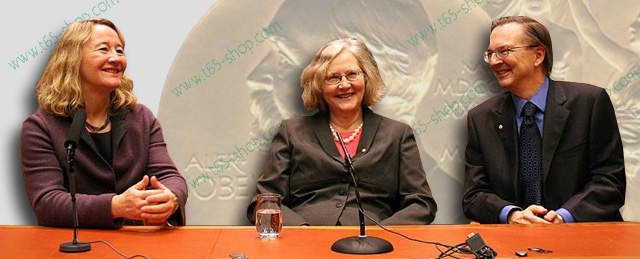In 2009 and for the third time in the Nobel Prize history, works on the ends of chromosomes - the telomeres - were awarded. After Hermann Muller in 1946 and Barbara McClintock in 1983, it was three Americans Elizabeth Blackburn, Carol Greider and Jack Szostak, to be awarded the Nobel Prize in physiology.

A protection mechanism
The story begins in 1980 during a conference. On the stage, Elizabeth Blackburn, a scientist at Berkeley University of California, presenting results of a study on an unicellular organism (Tetrahymena) genome, a ciliated protozoan with the particularity of possessing several thousands of chromosomes (46 for humans ). An expansion which, she said, allowed her to noticed that at the ends of each chromosome was always the same genetic sequence : a replication of CCCCAA, a "genetic stutter" very hard to explain .
Except for one of the conference auditors. Jack Szostak, professor of genetics at Massachusetts General Hospital in Boston where he has just finished an experiment in which he showed that DNA ends - "mini-chromosomes" - injected into yeast were progressively shortened after several cellular divisions. Elizabeth Blackburn on-stage presentation gave him the following idea: could it be that the genetic sequence present in ciliates but absent from these mini-chromosomes serve as a kind of protection and prevent the shortening of chromosomes ? To verify this hypothesis , the two scientists partnered and reproduced Jack Szostak experience adding the strange genetic repeats observed in ciliated, at the ends of each minichromosome. As a result: wearing these DNA sequences , the small chromosomes retained their size from division to division. Telomeres are effectively used as a protection for chromosomes. Since then, they have been found in the majority of plant and animal organisms .
Sous-titres : cliquez sur ![]()
